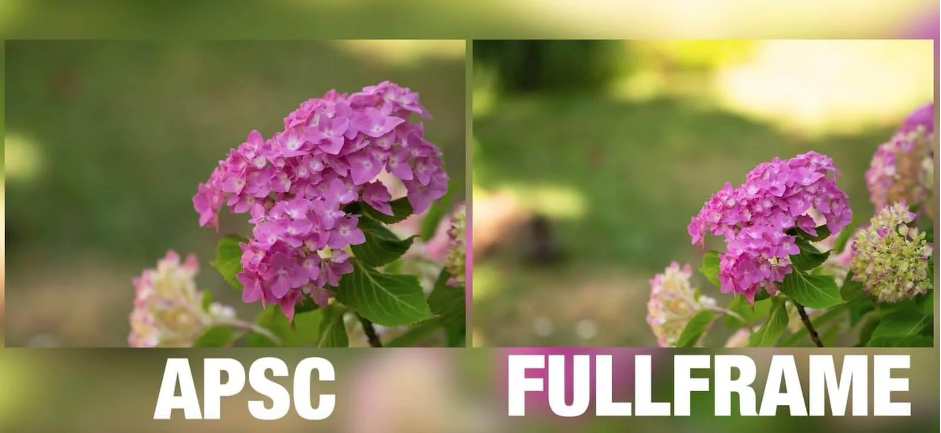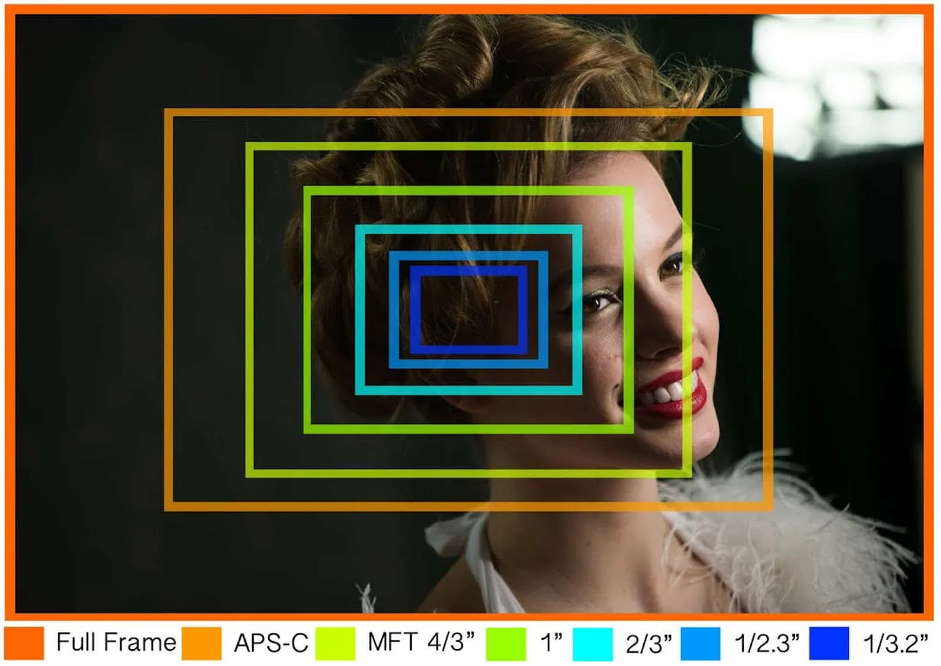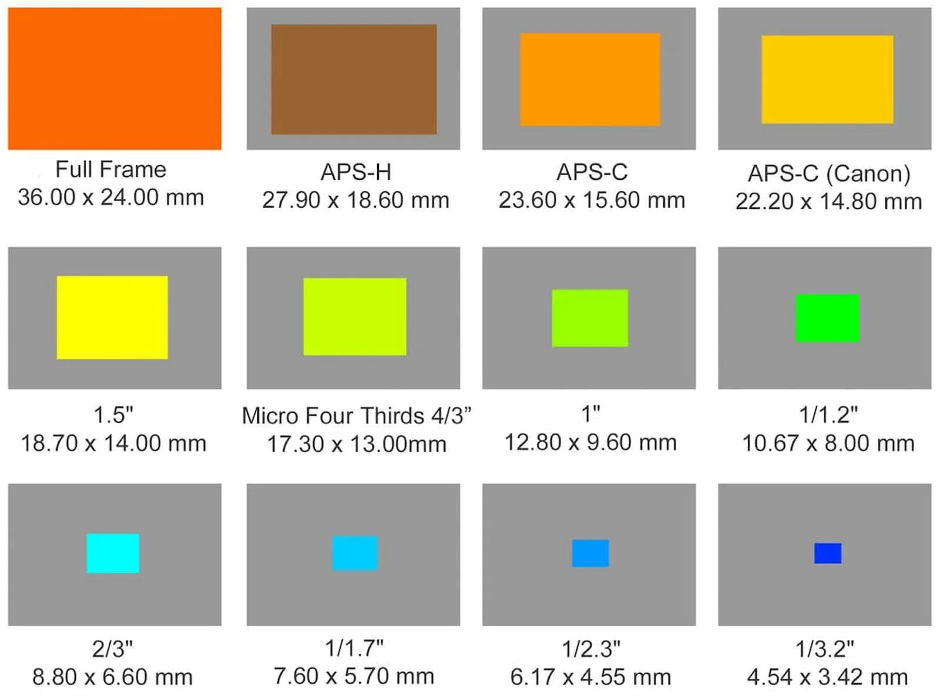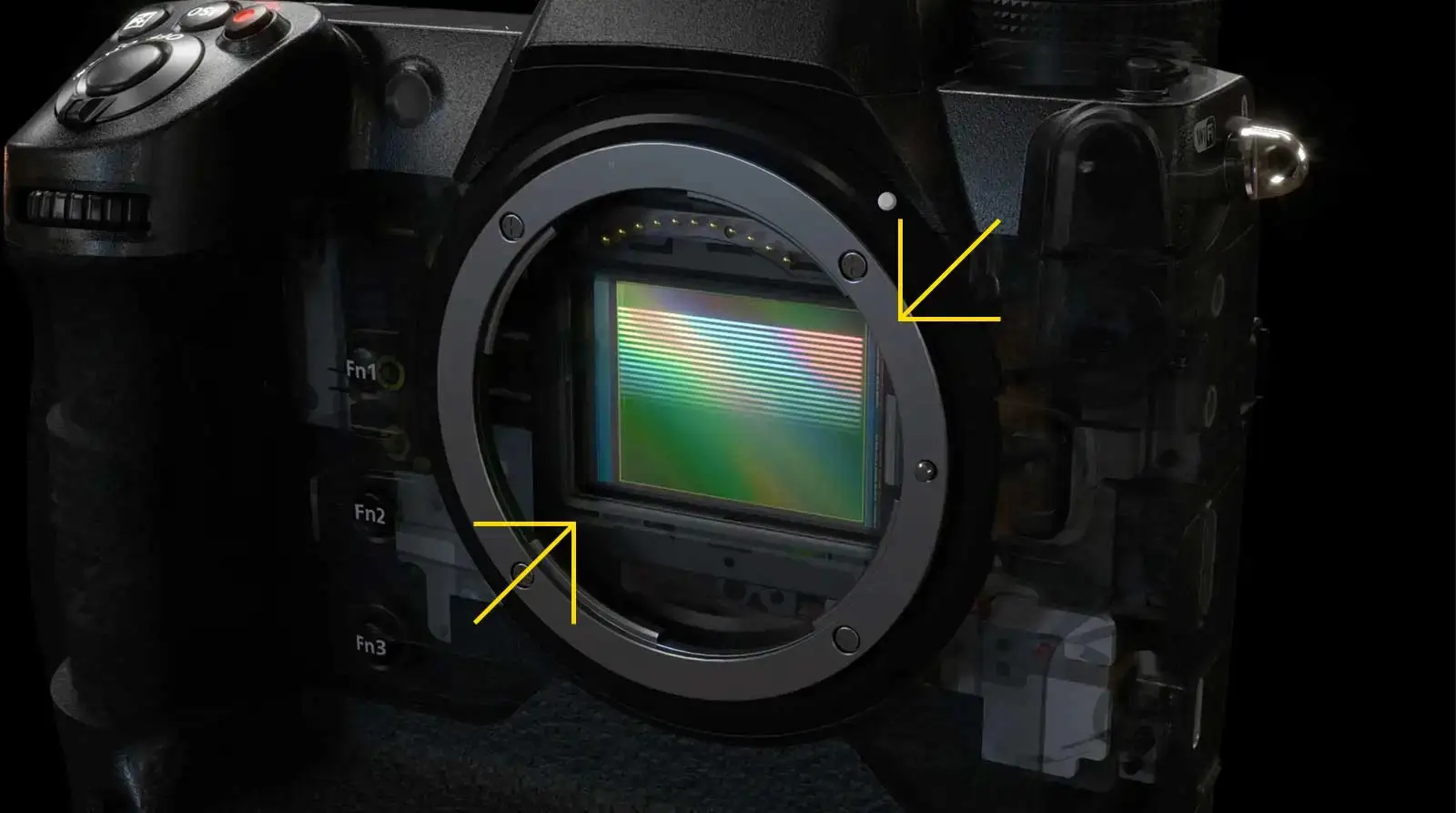A critical component of your digital camera is the sensor. When renting or buying a camera, the sensor size is an important factor to consider. The image quality and variety of the types of photographs you can record are both strongly tied to the sensor on your camera. So, why does the size of a camera sensor matter? Let's look at it more closely.
Does a camera’s sensor size matter?
Before we go into a camera sensor size comparison and the differences between smaller and larger sensor sizes, let's first clarify what a camera sensor is. Before we do anything else, we should figure out what it's main objective is.
CAMERA SENSOR DEFINITION
What is a camera sensor?
A camera sensor is a piece of hardware that captures light and turns it into signals, resulting in an image. Millions of photosites, or light-sensitive dots, make up sensors, which capture what is viewed via the lens. The amount of light used to form the image is determined by the size of the camera's sensor.
Because a sensor saves so much information, a larger camera sensor can store more data, resulting in higher-quality photographs than smaller sensors. What you see through the viewfinder of your camera is determined by its size.
Lenses on smaller sensors are cropped, whereas larger sensors can catch significantly more of the scene. This full-frame film is made with larger sensors and is similar to standard 35mm film. The size of a camera sensor impacts image size, depth of field, resolution, low-light performance, and the physical size of the camera.
Quick Overview on Photosites and Megapixels
While megapixels are crucial, they aren't the be-all and end-all when it comes to creating a crisp image. The sensor size has a big influence. Let's take a closer look at it.
Your camera's sensor is essentially a photo-sensitive area that picks up light and color. On this sensor, the "photosites" are millions of light-capturing holes. The camera converts these photosites into pixels, which make up your image.
The pixel is the smallest unit of a digital image that can be shown on a display device. One million pixels equals one megapixel. As a result, the number of photo-sensitive sites on your sensor is proportional to the megapixel count.
A 24-megapixel camera indicates the sensor has 24 million photosites. So, where does the size of the camera sensor come into play? Keep in mind that a higher megapixel number does not always imply greater image quality. Why?
Well, having a high megapixel count on a small sensor simply means the photosites are smaller. This looks great in natural light. In low light, however, the tiny photosites on a smaller sensor do not perform as well.
Hopefully, you now understand how megapixels and sensor size interact, and we can go on to how sensor size influences the quality of each photo. Remember that in order to get the most out of your camera sensor, you'll need to know how to clean it properly.
SENSOR SIZE COMPARISON
How does sensor size affect your shot?
Of course, bigger isn’t always better.
To cast a picture over a larger sensor, a larger lens is required. Not to mention the fact that a large sensor may necessitate a larger camera. Both of these concerns can be time-consuming and costly, especially if you're traveling or if your filmmaking style doesn't necessitate them.
What other effects does the sensor size of a camera have on your images? This movie delves into the finer points of camera sensor size science.
Low-Light Capabilities
As previously said, megapixels measure the resolution of your image, but a bigger number does not always imply that they cover all. In comparison to a smaller sensor, a larger sensor allows for larger photosites and the capacity to capture low-light scenarios.
Image Quality and Resolution
The resolution of a camera is measured in megapixels. The larger the sensor on a camera, the larger the photosites, which may accommodate more megapixels and produce a sharper image.
Depth of Field
A bigger sensor is the way to go if you want to record a shallow depth of field or blur the background to make your subject stand out. Smaller sensors necessitate a greater distance from the subject to do this. Alternatively, they'll require a lens with a very wide field of view.
Here's a video that explains how aperture affects the depth of field range. Here's an example of two sensors at the same distance capturing the blur in completely different ways. Learn about the many types of camera lenses and how they function.

Angle of View
The angle of vision describes how much of the frame we'll be able to see once the photo is taken. A crop factor is applied to smaller sensors. Take a peek at the images below. You'll note how much more of the image is accommodated by the full frame (bigger sensor).

Let's move into more particular detail, including technical specs, now that we've reviewed the fundamental differences between large and small camera sensor sizes.
A sensor size comparison
Another technique to evaluate the quality of your equipment is to consider sensor size. When you're buying for a camera, keep in mind that the sensor size is an important consideration. Make sure you understand the various types of cameras and lenses, as well as how those aspects interact with the sensor size of your camera.
Here's a quick rundown of some of the most common camera sensor sizes. Benjamin Jarwoskyj also shows us the photos produced by some of these various sensor sizes.
Larger sensors, according to Jarwoskyj, are ideal for catching more backdrop around your subject. The disadvantage is that larger sensors operate poorly in low-light situations. To put it another way, camera sensor size matters, but bigger isn't always better.
A fast sensor size chart with technical specifications can be seen below. Below, we'll go over how each of them functions on its own.

Full Frame 36mm by 24mm
This is the sensor with the largest size. It's the same size as a 35mm film frame, as previously stated. Because there is no crop factor, you will photograph exactly what you see in the viewfinder. Images of this size frequently necessitate larger cameras and even larger lenses.
These sensors can capture very tiny depths of focus when utilizing wide aperture lenses, which is ideal for videography.
APS-H 28.7 mm by 19mm
The APS (active pixel sensor) is a popular sensor for interchangeable lens cameras. With a 1.3x crop factor, it combines a big sensor with a moderate pixel count, increasing ISO performance.
APS-C 23.6mm by 15.8mm
Also quite popular, particularly with major brands. Not all APS-C sensors have the same measurement range. A Canon APS-C sensor measures around 22.2mm by 14.8mm, while the Sony sensor is approximately 23.5mm by 15.6mm..
Four Thirds 17.3 mm by 13mm
Approximately one-quarter the size of a full-frame sensor. It has a crop factor of 2x. Panasonic and Olympus are the only manufacturers who use the four thirds approach. It's around a third to a half the size of APS-C sensors. The Micro Four Thirds System, often known as MFT or M 4/3, is a mirrorless interchangeable lens camera system developed by Panasonic.
1-inch Sensor
This is a 13.2mm to 8mm sensor with a crop factor of 2.7x.
There are sensors that are even smaller, but we won't describe them because they aren't as useful.
Nikon Z9 Camera Sensor Capabilities Explained
When Nikon introduced the Z9, it wasn't just releasing another mirrorless flagship — it was announcing a technological leap. At the heart of this beast lies one of the most advanced sensors ever created, setting new benchmarks for speed, detail, and flexibility across photography and videography.
Let’s dive deep into the Nikon Z9’s sensor capabilities and see why it's rewriting the rules of the game.
1. 45.7 MP Stacked CMOS Sensor
At its core, the Nikon Z9 features a 45.7-megapixel stacked CMOS sensor — and that "stacked" part is crucial.
What is a Stacked Sensor?
In traditional sensors, data is read out line-by-line, which can create distortion (called "rolling shutter") when photographing fast-moving subjects. A stacked sensor speeds up this process dramatically by layering the circuitry behind the photodiodes, allowing for near-instant data readout.
The Result:
Virtually no rolling shutter effects.
Ultra-fast continuous shooting speeds.
Exceptional detail retention, even with rapid subject movement.

Caption: Stacked sensor technology for next-gen speed and quality.
2. Lightning-Fast Data Readout
The Z9 sensor reads all 45.7 million pixels so quickly that it doesn't need a mechanical shutter at all — it's the first Nikon flagship to eliminate it entirely.
-
Benefits:
- Silent shooting — perfect for wildlife, weddings, and street photography.
- No shutter shock, leading to crisper images.
- Less mechanical wear and longer lifespan.
Whether you're freezing the split-second wingbeat of a hummingbird or capturing a cheetah mid-pounce, the Z9’s sensor ensures every frame is captured without compromise.
3. Unmatched Autofocus Performance
The combination of the sensor's speed and Nikon’s new EXPEED 7 processor brings autofocus to a new level:
-
493 AF Points
Covering 90% of the frame, these points allow you to focus anywhere without limitation. -
Subject Detection and Eye-Tracking
Thanks to the fast sensor readout and AI algorithms, the Z9 can:- Recognize and track humans, birds, mammals, cars, planes, motorcycles, and trains.
- Lock onto eyes (even small bird eyes in flight) with uncanny accuracy.
4. Stunning Image Quality
With 45.7MP, you're not just getting big files — you're getting files rich in dynamic range, color depth, and fine detail.
-
ISO Performance:
Despite the high resolution, the Z9 handles noise incredibly well across its native ISO range of 64–25,600 (expandable to 32–102,400). -
Dynamic Range:
Exceptional retention of highlight and shadow details, crucial for scenes with harsh lighting contrasts like sunrise safaris or rainforest undergrowth. -
High Bit-Depth:
With 14-bit RAW shooting, there's enormous flexibility for post-processing, allowing wildlife, landscape, and portrait photographers to push colors and exposure further without degradation.
5. Pro-Grade Video Directly from the Sensor
The Z9's sensor isn’t just about stills — it’s built for high-end video too:
- 8K UHD at 30p internally — recorded with full pixel readout.
- 4K UHD at up to 120p — perfect for silky slow-motion footage.
- N-RAW and ProRes RAW support — offering maximum flexibility for professional color grading.
- No time limits — shoot until your card or battery runs out.
All thanks to the heat-efficient, fast data-pumping sensor design.
Conclusion: A Sensor Built for the Future
The Nikon Z9’s sensor isn’t just about megapixels — it’s about what those pixels can do fast, accurately, and flexibly.
From delivering 20 frames per second RAW bursts to flawlessly tracking a bird’s eye across the sky, to recording cinematic 8K footage, the Z9's sensor is engineered to meet (and exceed) the demands of today’s — and tomorrow’s — visual storytellers.
Whether you're a wildlife photographer, sports shooter, landscape artist, or filmmaker, the Z9 puts cutting-edge performance literally at your fingertips.